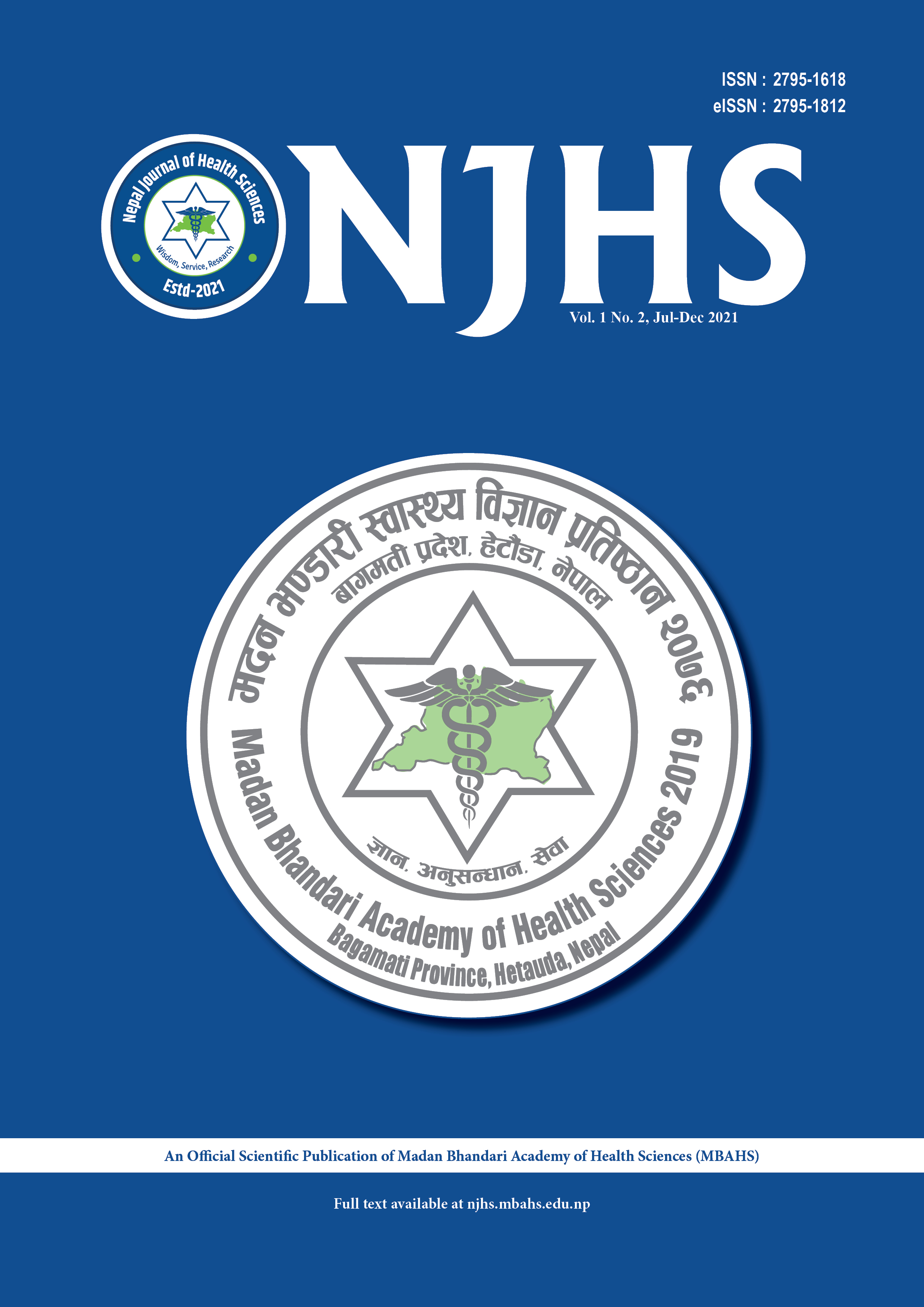Comparison of Two Different Doses of Dexamethasone to Control Swelling and Trismus following Mandibular Third Molar Surgery
DOI:
https://doi.org/10.3126/njhs.v1i2.42365Keywords:
Dexamethasone, impacted third molars swelling, trismusAbstract
Introduction: Third molar surgery is one of the most common procedures performed by dental surgeons in clinical practice, where postoperative sequelae like pain, trismus, and swelling are often encountered. Thus, in this study, we compared medications employed to reduce such complications.
Objective: To compare the effect of two different doses (4 and 8 mg) of dexamethasone in the control of swelling and trismus after the surgical extraction of mandibular impacted third molars.
Methods: An experimental study consisted of twenty-seven (27) healthy adult patients of both genders with bilateral impacted lower third molars, where surgical extraction was indicated, 4 mg and 8 mg of dexamethasone were given orally to the patients 1 hour before the surgical procedure at both the surgeries. The swelling was recorded by measuring the length of 3 facial planes using a measuring tape. Trismus was evaluated by measuring the maximum interincisal distance. Recording of facial swelling and maximum interincisal distance was done preoperatively and on the 1st and 2nd days postoperatively.
Results: Based on statistical analysis (Independent T-test), the results showed a difference in the measurements of the degree of swelling and trismus of the treated sample. 8 mg of dexamethasone promoted a greater reduction of symptoms than 4mg of dexamethasone though there was no statistically significant (p-value >0.05) difference between the two doses.
Conclusions: 8 milligrams of the dexamethasone had better effectiveness than 4 milligrams of the dexamethasone in reducing the degree of swelling and trismus.
Keywords: Dexamethasone; impacted third molars; swelling; trismus.
Downloads

Downloads
Published
How to Cite
Issue
Section
License
Copyright (c) 2021 Pranay Ratna Sakya, Dipti Shrestha, Reena Shrestha, Dhiraj Khadka Khadka, Ratina Tamrakar, Sudeep Acharya

This work is licensed under a Creative Commons Attribution 4.0 International License.



